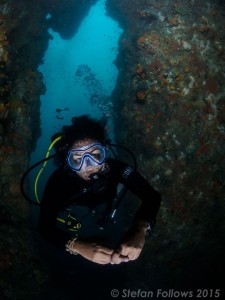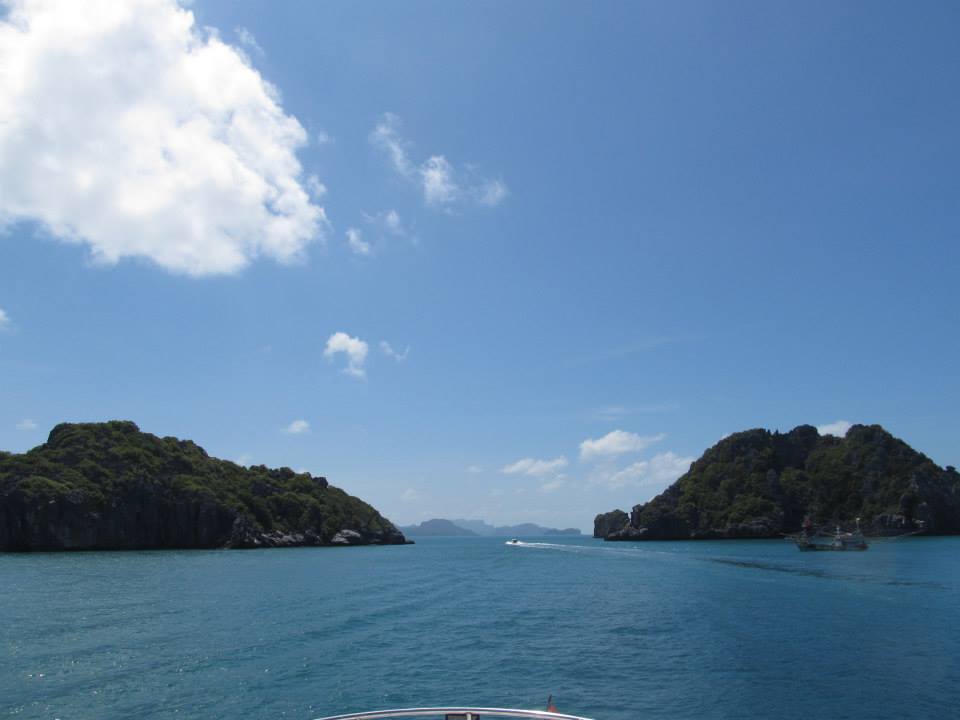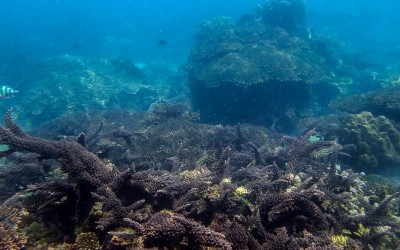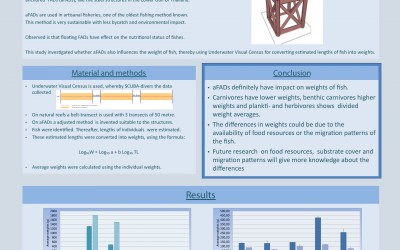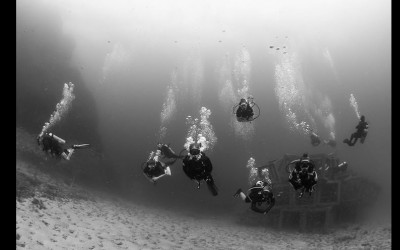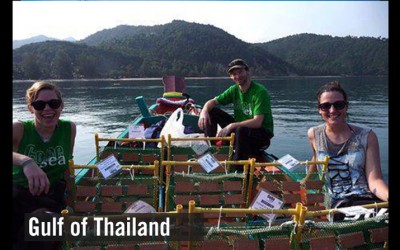I’m hovering. The tape measure is to my left and I’m trying to hold the blue transect square still for the diver above me who is snapping photos at each alternating meter. My buoyancy is still far from great, but after a week of practice the stillness feels more natural.
Once we dry off and get back to the lab we download the photos from the dive and start analyzing them to get biodiversity approximations of the selected 150 meters in Mae Haad, a bay by the CORE Sea station. Where once a vibrant reef flourished, these days the bay is dominated by dead coral and algae. Spectacular parrotfish and brilliant anemones still litter the ocean floor, but they are much fewer and farther between than in the bustling dive sites away from the coast. The data crunching can feel a little tedious at times and the results a little frustrating. Within the first week of my internship I had to ask: why are we doing it?
That question was my introduction to CORE Sea’s biggest and most important project, referred to as ‘Not All Hope Is Gone.’ The marine ecosystem in the Gulf of Thailand is worsening each year as fishing, climate change, and tourism continue to escalate. ‘Not All Hope Is Gone’ is CORE’s long-term plan to protect the Gulf through the community-driven establishment of a Marine Protected Area (MPA).
Establishing a space as an MPA is one of the most effective ways to conserve it. But, it is not as simple as circling it on a map or gathering the testimonials of local people. Anyone on Koh Pa Ngan for the last 15 years could tell you the marine ecosystem is on a downward spiral, but to turn such a massive area into an effective MPA it takes community engagement and cold, hard proof of the situation’s direness. That is what CORE Sea is working on. We are trying to track the changes in the Gulf of Thailand with sound science. Each project, collaboration, and thesis is a step along that path.
After an academic career tracking policy, my time here at CORE Sea taught me what the foundation of good environmental policy is: science. In the Gulf of Thailand it’s plain to see the need for heightened marine protection, but it must be proved with science before the policy is enacted.
Now what seemed mundane feels like it’s on the cutting edge. Doing a biodiversity transect feels more satisfying than getting an A on a university test or exceeding at work. My time here at CORE hasn’t just been about becoming a better diver and marine researcher, but rather about being part of a larger vision to protect a beautiful spot on the map. It is scary to think about what the beauties of the Gulf will look like if no one steps in, but it’s important to remember that not all hope is gone.
Buy cool Apparel
Support us, buy cool stuff
Join the team
make a difference
Learn more
About the Oceans

Julianna Renzi
Author
Julianna is studying environmental sciences and economics at the University of Arizona, USA. She writes opinion pieces and specializes in soil and marine systems.
Browse other Articles
Simulation of overfishing and eutrophication
The biggest factors threatening coral reefs today are considered to be overfishing and high nutrient levels from untreated sewage. Ines simulated that by adding fertilizer, and excluding herbivore fish with a nifty cage design. See the...
Influence of aFADs on the weight of fishes
Artificial Reefs are man-made structures replicating the properties of natural features. They are used to restore coral reefs, but they are also known for their fish aggregating behavior. This feature makes them an important tool to...
Coastal Zone Management
The coastal zone is a very dynamic place, because it is influenced by so many different factors. Like, waves, tides, currents, river discharge, changing sea levels, sinking and rising of the land and of course those pesky humans you see...
Sunken Treasure
Reproduced with permission from Author. Originally published on custommade.com Underwater Timber Stands the Test of Time When people think of timber harvest, Paul Bunyon in SCUBA gear is not the first image that comes to mind....
The catch-22 of Sea Food: Ghost Nets
Sea food tastes great, but it leaves people like Rebecca Lehmann with quite a mess to clean up. Read her article on a ghost net removal below. It was an early 7 AM start as we head out to Samran Pinnacle. After the necessary coffee infusion, we packed our gear, tanks,...
About the state of health of the Gulf of Thailand (5)
In situ simulation of eutrophication and overfishing in a coral reef of Koh Phangan, Thailand - Effects on sediment surface parameters - Soureya Becker (MSc.) ABSTRACT The Gulf of Thailand is a highly under-investigated area that experiences increases in anthropogenic...
